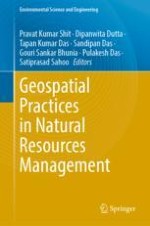2024 | OriginalPaper | Buchkapitel
9. Spatio-Seasonal Runoff and Discharge Variability in the Ganga River Basin, India: A Hydrometeorological Perspective
verfasst von : Raghunath Pal
Erschienen in: Geospatial Practices in Natural Resources Management
Aktivieren Sie unsere intelligente Suche, um passende Fachinhalte oder Patente zu finden.
Wählen Sie Textabschnitte aus um mit Künstlicher Intelligenz passenden Patente zu finden. powered by
Markieren Sie Textabschnitte, um KI-gestützt weitere passende Inhalte zu finden. powered by
